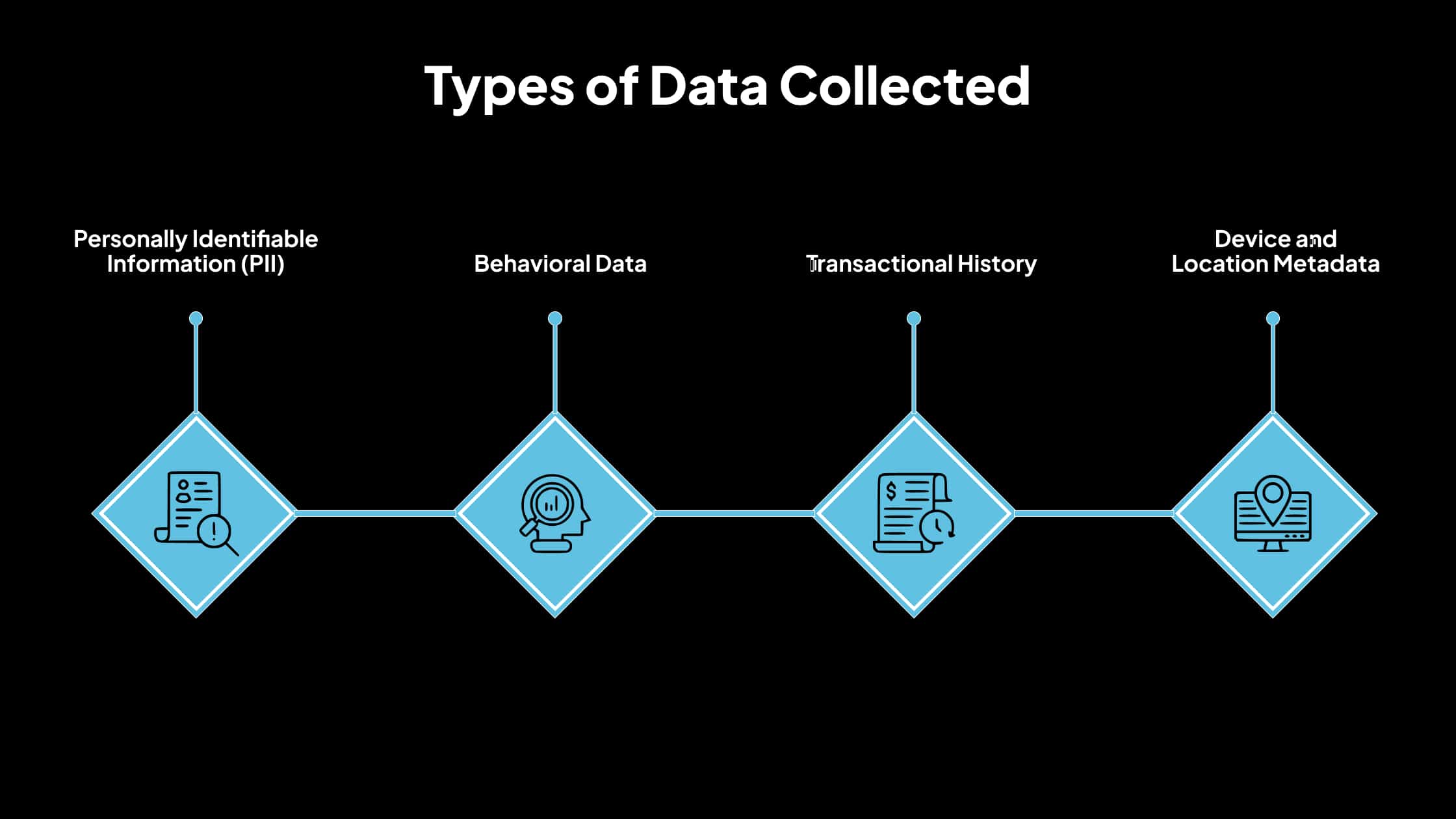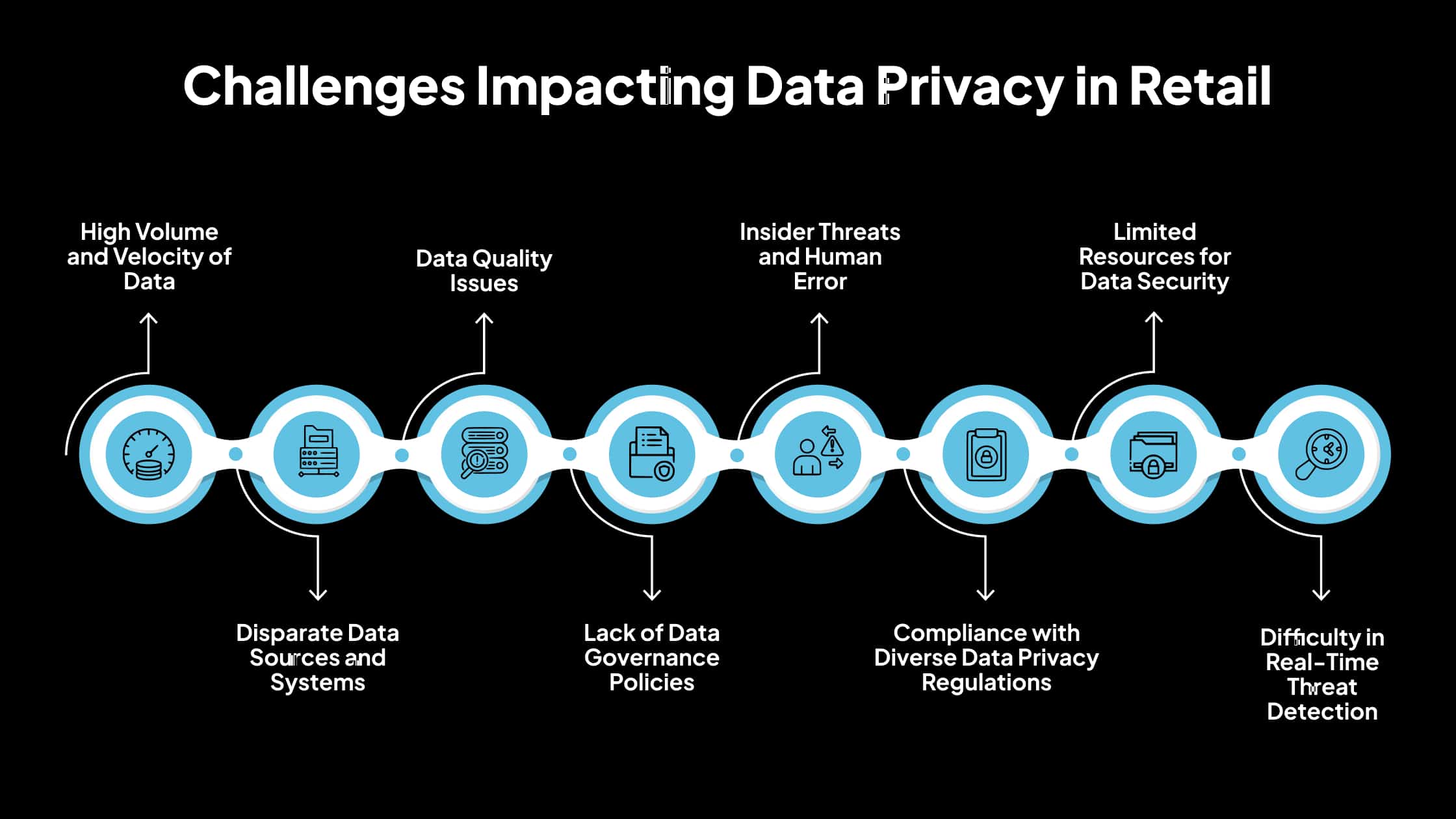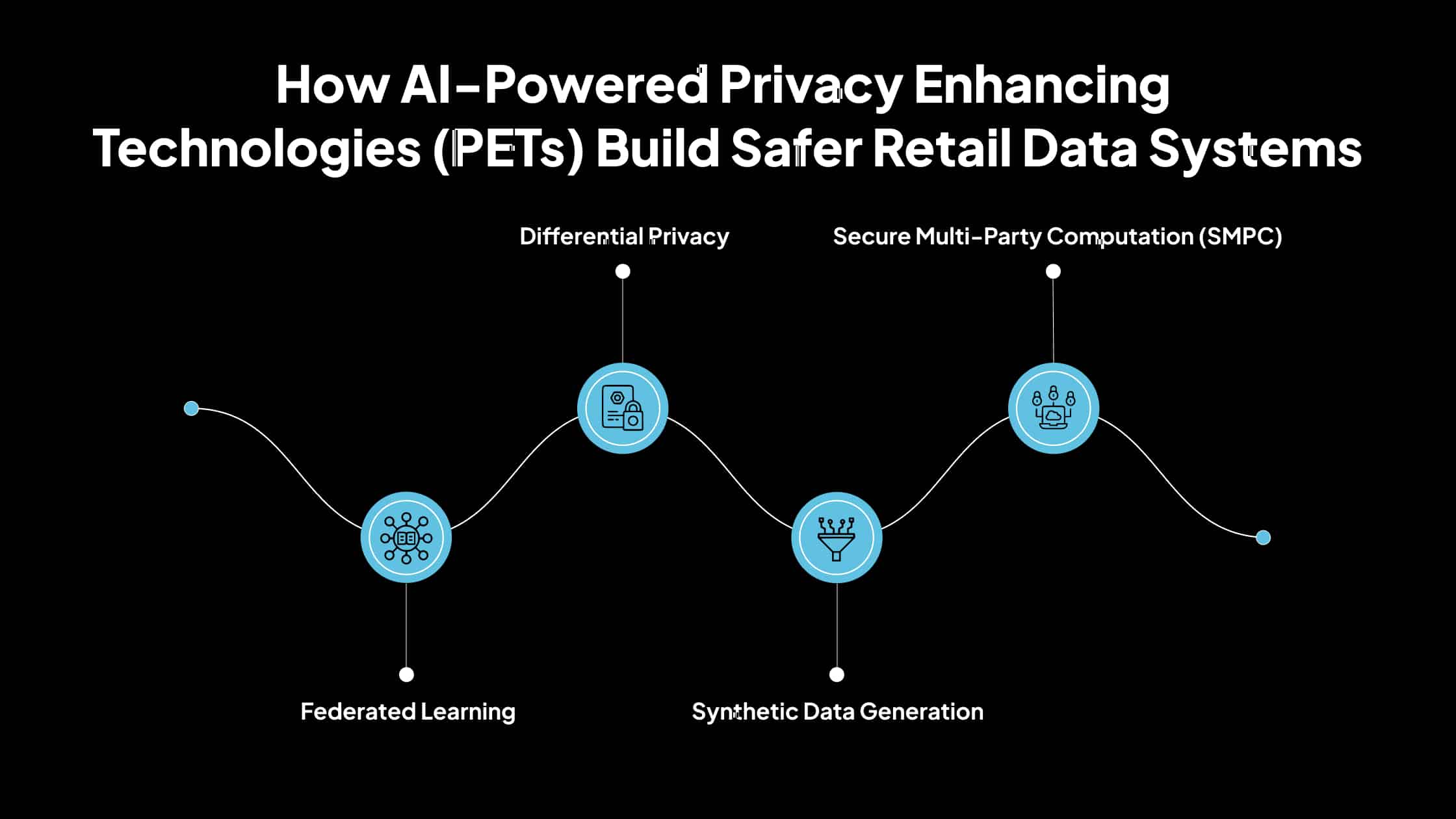Running a retail business today means handling more than just sales; you’re handling sensitive customer data every minute.
From online purchases and loyalty programs to in-store transactions and mobile apps, retailers collect vast amounts of personal information.
But here’s the reality: According to the Identity Theft Resource Center (ITRC), in 2023, there were 3,205 publicly reported data compromises in the United States, marking a 72% increase over the previous high. And the retail sector continues to be one of the most targeted by cybercriminals.
That means one data leak isn’t just a technical issue; it is a business risk that can cost you sales, loyalty, and reputation.
Conventional data security tools can’t keep up with today’s threats. You’re dealing with complex systems, fragmented data across platforms, and growing compliance demands from laws like GDPR and CCPA.
For modern retailers, AI offers real-time threat detection, intelligent data classification, automated compliance, and rapid breach response at a scale that manual systems can’t match.
In this blog, we’ll explain why data privacy in retail is under pressure, how AI solves the biggest challenges, and discuss what leading brands are doing right now to stay ahead of risk and the competition.
Understanding Retail Data: Types, Sources, and Privacy Implications
Retail businesses operate in a data-rich environment today. Understanding the types of data collected, where it originates, how it adds value, and its associated risks is essential for building effective data privacy strategies.
Types of Data Collected
1. Personally Identifiable Information (PII)
Retailers collect PII such as names, phone numbers, email addresses, shipping addresses, and payment details. This data is critical for transactions, account creation, and customer communication. However, if mishandled, it poses high privacy risks, as it can be directly linked to an individual.
2. Behavioral Data
This includes information about how customers interact with a brand’s digital assets, such as pages viewed, time spent on site, click paths, cart activity, and bounce rates. Behavioral data helps retailers understand user preferences, purchase intent, and friction points across the buying journey.
3. Transactional History
Retailers log each purchase, including item types, price points, purchase frequency, and payment methods. This historical data supports personalized recommendations, loyalty reward calculations, and trend analysis.
4. Device and Location Metadata
Data about the device used (e.g., mobile vs. desktop), operating system, browser type, IP address, and geolocation is passively collected during digital interactions. This metadata enhances fraud detection, helps with device fingerprinting, and enables location-based offers or services.
Sources of Retail Data
1. Point of Sale (POS) Systems
In-store purchases processed through POS systems generate valuable transaction records and link them with loyalty or customer accounts. These systems also often track cashier activity, returns, and coupon usage.
2. Customer Relationship Management (CRM) Tools
CRM platforms consolidate PII, communication history, support tickets, and purchase behavior. This central hub is essential for personalized outreach and targeted campaigns.
3. E-commerce Platforms
Online stores collect extensive data, from shopping cart behavior to payment attempts, wishlist usage, and abandoned cart information. These platforms often integrate with analytics and advertising tools to build user profiles.
4. Loyalty Programs
These programs incentivize data sharing in exchange for rewards. They capture frequent purchase behavior, preferred products, visit frequency, and customer lifetime value.
5. Social Media Channels
Retailers monitor engagement metrics on platforms like Instagram, Facebook, and X (formerly Twitter), such as likes, shares, comments, and sentiment analysis. Social login features also import user data directly into retail databases.
Challenges Impacting Data Privacy in Retail
Retail businesses deal with large volumes of data from various sources. The following challenges directly affect how well organizations can uphold data privacy in retail, protect sensitive information, and maintain trust while operating efficiently.
1. High Volume and Velocity of Data
Retailers collect data from online stores, mobile apps, physical outlets, and customer service interactions.
This continuous flow creates large volumes of real-time data that are difficult to process, monitor, and store efficiently. Without scalable systems and automation, managing this data becomes unmanageable.
2. Disparate Data Sources and Systems
Retail data is often scattered across disconnected systems such as POS terminals, CRMs, inventory software, and marketing platforms.
This fragmentation leads to duplication, inconsistency, and gaps in data visibility. Getting a unified view of customer behavior or ensuring consistent data security policies across systems becomes difficult.
3. Data Quality Issues
Incomplete, outdated, or incorrect data reduces the effectiveness of personalization, inventory forecasting, and marketing efforts.
Poor data quality also increases the risk of non-compliance with data regulations, as incorrect records may be retained or misused.
4. Lack of Data Governance Policies
Businesses face confusion and inconsistency without clear policies on who owns the data, who can access it, and how long it should be stored.
This lack of governance can lead to unauthorized access, unintentional exposure of sensitive data, and failure to meet regulatory requirements.
5. Insider Threats and Human Error
Employees, contractors, or third-party vendors with access to retail systems may unintentionally or intentionally compromise data.
Examples include misconfigured permissions, sharing sensitive files without encryption, or falling for phishing attempts. These internal risks are often harder to detect than external attacks.
6. Compliance with Diverse Data Privacy Regulations
Retailers across states or countries must comply with multiple data privacy laws, such as GDPR, CCPA/CPRA, etc.
Each law has different data collection, processing, retention, and user consent requirements. Ensuring compliance across jurisdictions is complex and requires ongoing legal and technical oversight.
7. Limited Resources for Data Security
Many small or mid-sized retailers lack the budget or expertise to implement advanced data security measures.
This limitation exposes them to higher breaches, penalties, and reputational damage risks. Basic protections like encryption, multi-factor authentication, and regular audits are often underutilized.
8. Difficulty in Real-Time Threat Detection
Traditional monitoring tools may not be equipped to identify suspicious activity quickly. Retailers need systems that detect real-time anomalies, such as unusual login locations or data transfer spikes, to prevent breaches before they escalate. Without automation and AI, timely threat detection is difficult.
From Compliance to Confidence: How AI Is Changing Data Privacy in Retail
Artificial Intelligence (AI) is transforming how retail businesses manage data privacy. It offers scalable, intelligent solutions to detect risks, enforce policies, and ensure regulatory compliance. Here is how artificial intelligence plays a role in preventing and mitigating risks in real time:
1. Real-time Anomaly Detection
AI systems continuously monitor data flows, user activity, and system behavior to detect abnormal patterns. For example, if an employee logs in from an unusual location or transfers extensive data, the AI flags it instantly.
Machine learning algorithms use historical incident data to refine what qualifies as suspicious, improving detection over time. This is critical in identifying account takeovers, bot attacks, unauthorized API access, and other indicators of compromise before they cause significant damage.
2. Automated Compliance Monitoring
AI helps retailers comply with data privacy regulations such as GDPR, CCPA, and CPRA. It automates scanning documents and databases to detect and classify personal data, ensuring it is processed lawfully.
NLP models extract and validate consent language in privacy notices, while rule-based engines enforce data minimization, storage limitation, and consent expiry protocols. This reduces manual effort and ensures consistent compliance control application across systems and regions.
3. Intelligent Data Classification & Tagging
AI algorithms classify data based on sensitivity, source, and format. This applies to structured data (e.g., CRM records, transaction logs) and unstructured data (e.g., emails, support tickets, PDFs).
Classification engines use pattern recognition and contextual analysis to apply security tags, such as “Confidential,” “PII,” or “Payment Info.” This enables data protection teams to prioritize encryption, access control, and retention rules according to risk level, improving the precision of security investments.
4. Access Management & User Behavior Analytics
AI-driven Identity and Access Management (IAM) systems analyze user behavior to ensure appropriate access to sensitive data. These systems track who accesses what data, at what time, from which device, and for what purpose.
The system triggers alerts or blocks access when the behavior deviates from the established baseline, such as a junior employee accessing payroll data. This reduces insider threats and enforces least privilege access principles across the organization.
5. Breach Response Automation
AI tools can immediately isolate affected endpoints in a data breach, revoke compromised credentials, and initiate backup restoration processes. These automated actions significantly reduce incident response time and prevent further spread of the breach.
AI also supports forensic analysis by mapping the breach timeline, identifying affected data, and generating audit reports. This enables faster notification to regulators and stakeholders, limiting operational disruption and reputational damage.
How AI-Powered Privacy Enhancing Technologies (PETs) Build Safer Retail Data Systems
Privacy Enhancing Technologies (PETs) are tools and frameworks designed to protect personal and sensitive data while enabling its use for analysis and decision-making.
When combined with AI, these technologies allow retailers to extract insights without exposing customer identities or violating privacy regulations. The following are key AI-driven PETs used in modern retail data environments:
1. Federated Learning
Federated learning is a machine learning approach in which the model is trained across multiple decentralized devices or servers that hold local data samples without ever transferring it. Only the model updates, such as weights and gradients, are shared with a central server for aggregation.
For example, a large retail chain with hundreds of stores can train a sales forecasting model using data from each store without transmitting sensitive transactional records to a central location.
Google has applied federated learning in Android devices for next-word prediction, preserving user input privacy. This technique minimizes data exposure and complies with regional data residency laws.
2. Differential Privacy
Differential privacy introduces controlled randomness or “noise” into datasets to ensure individual records cannot be identified, even when the dataset is queried or analyzed. The privacy loss is measured using epsilon (ε), which defines the balance between accuracy and privacy.
For instance, Apple uses differential privacy to gather user behavior insights from iPhones while protecting individual user identities.
Retailers can use similar methods to analyze customer preferences for product placements or promotions without risking exposure of individual behaviors. This is particularly useful for statistical analysis and aggregated reporting without compromising user-level privacy.
3. Synthetic Data Generation
Synthetic data is artificially generated data that mimics the statistical properties of real datasets. AI models, especially generative adversarial networks (GANs), are trained on actual customer data to create similar but entirely fake data that preserves structural patterns.
A retailer can train fraud detection algorithms using synthetic transaction records that replicate purchase patterns without using actual customer details. Financial institutions and healthcare providers already use synthetic data for software testing and model training while maintaining compliance with data protection laws. This enables safe sharing of datasets for research, testing, or third-party model development.
4. Secure Multi-Party Computation (SMPC)
Secure Multi-Party Computation allows multiple parties to jointly compute a function over their inputs while keeping them private. Each party’s data remains encrypted or split into shares, and only the result of the computation is revealed.
For example, two competing retail chains could jointly analyze market trends or benchmark loyalty program effectiveness without exposing their customer databases to each other. Another use case is payment processors running fraud detection algorithms on shared signals from multiple retailers without disclosing sensitive payment data. SMPC is especially valuable in collaborative scenarios where data sharing is sensitive or legally restricted.
Why AI is Becoming Crucial for Data Privacy in Retail?
As digital transactions, personalization, and data sharing accelerate across the retail sector, the complexity and scale of data privacy in retail have increased significantly. Here is why AI is becoming essential in the retail industry:
1. Rising Cyber Threats Targeting Retail Data
Retail remains one of the most targeted industries for cyberattacks. According to IBM’s Cost of a Data Breach Report 2023, the average cost of a breach in the retail sector reached $2.96 million, and 45% were cloud-based. With more customer data stored across e-commerce platforms, mobile apps, and third-party services, threat actors have more entry points than ever.
AI provides continuous monitoring and anomaly detection capabilities that traditional systems lack. For example, AI can detect bot-driven credential stuffing attacks within seconds and trigger automated countermeasures, significantly reducing exposure time.
2. Regulatory Pressure is Increasing
Governments are tightening data privacy regulations. Laws like GDPR and CCPA/CPRA require real-time consent management, user data access controls, and breach reporting. Manual systems cannot scale to meet these compliance requirements across multiple jurisdictions.
AI helps automate these tasks. AI-driven systems can classify sensitive data, flag non-compliant data practices, and automate user data access and deletion requests.
3. Consumers Expect Privacy-First Experiences
Privacy has become a key factor in consumer trust. A Cisco survey found that 81% of consumers would stop doing business with a brand that mishandles their data. In retail, where customer loyalty is critical, failure to protect personal data can directly affect revenue.
AI enables privacy-by-design experiences. For example, Apple’s iOS uses on-device AI and federated learning to process user preferences and app activity locally, limiting data exposure. Retailers adopting similar approaches can deliver personalized services without centralizing raw user data.
4. Data Volumes Are Outpacing Manual Management
Retailers collect massive data volumes from online purchases, loyalty programs, in-store sensors, chatbots, and email marketing. Manually managing this scale of data introduces delays, errors, and risk.
AI systems are built to process large datasets at speed. Tools like Microsoft Purview and Google Cloud’s DLP API use AI to scan petabytes of data, classify it by sensitivity, and apply access controls automatically. This ensures consistent policy enforcement without relying on manual intervention.
5. AI Improves Breach Detection and Response
Time is critical in a breach. The longer it takes to detect and respond, the higher the cost. According to IBM, organizations that use AI and automation detect and contain breaches 108 days faster than those that don’t.
For example, Target uses AI to detect unauthorized access to its loyalty systems and to automate
containment actions like revoking credentials and locking affected accounts. These capabilities reduce financial and reputational damage during an incident.
Real-World Examples of AI Powering Data Privacy in Retail
Retailers of all sizes are implementing AI to strengthen their data privacy frameworks. The examples below highlight how leading and emerging companies use AI technologies to protect customer data, detect threats, and ensure compliance with privacy regulations.
1. Walmart: AI for Data Protection and Behavioral Risk Monitoring
Walmart uses artificial intelligence to secure customer data across its global operations. The company applies AI and machine learning to monitor user behavior, detect anomalies, and prevent unauthorized access to customer accounts.
For example, AI systems analyze shopping patterns and login behavior to identify real-time suspicious activity. Walmart also uses AI for internal data governance, ensuring that sensitive information, such as personal identifiers and payment details, is accessed only by authorized personnel.
These tools help companies comply with privacy regulations like CCPA and ensure customer trust through transparent data handling practices.
2. Amazon: Real-Time Fraud Detection Using Machine Learning
Amazon relies heavily on AI-driven fraud detection systems to protect consumer data and payment details. Machine learning models continuously evaluate transactional data, login attempts, and device metadata to flag fraudulent behavior.
These systems are designed to function in real time, allowing Amazon to intervene before data breaches or account takeovers occur. Additionally, Amazon uses AI for internal access controls, ensuring employees access only the data necessary for their roles. These practices align with data minimization principles and support GDPR-compliant operations across regions.
3. Target: Securing Loyalty Program Data with Behavioral Analytics
Target uses AI-based behavioral analytics to safeguard its loyalty program and customer profile data. The retailer collects and analyzes behavioral data such as in-app activity, purchase frequency, and device usage to detect inconsistencies that may signal account misuse or identity theft.
AI systems assess these patterns and trigger alerts or automatically lock accounts when suspicious behavior is detected. Target also uses AI to classify and tag personal data, helping enforce access controls and retention policies under data protection laws.
Discover Avahi’s AI Platform in Action
At Avahi, we empower businesses to deploy advanced Generative AI that streamlines operations, enhances decision-making, and accelerates innovation—all with zero complexity.
As your trusted AWS Cloud Consulting Partner, we empower organizations to harness AI’s full potential while ensuring security, scalability, and compliance with industry-leading cloud solutions.
Our AI Solutions include
- AI Adoption & Integration – Utilize Amazon Bedrock and GenAI to enhance automation and decision-making.
- Custom AI Development – Build intelligent applications tailored to your business needs.
- AI Model Optimization – Seamlessly switch between AI models with automated cost, accuracy, and performance comparisons.
- AI Automation – Automate repetitive tasks and free up time for strategic growth.
- Advanced Security & AI Governance – Ensure compliance, fraud detection, and secure model deployment.
Want to unlock the power of AI with enterprise-grade security and efficiency? Get Started with Avahi’s AI Platform!
Frequently Asked Questions(FAQs)
1. What is data privacy in retail, and why is it important?
Data privacy in retail refers to protecting customer information collected during transactions, online activity, and loyalty programs. This includes personal data like names, addresses, payment information, and shopping behavior. It’s essential because mishandling this data can lead to security breaches, legal penalties, and loss of customer trust.
2. What types of customer data do retailers need to protect?
Retailers must protect personally identifiable information (PII), payment data, purchase history, browsing behavior, and location details. Securing this information is critical to maintaining data privacy in retail and complying with laws like GDPR and CCPA.
3. How does AI help improve data privacy in retail?
AI helps detect suspicious activity in real time, automate compliance checks, and managing access to sensitive data. For example, AI can flag unusual login attempts or prevent unauthorized access to customer records, making data privacy in retail more efficient and scalable.
4. What are the biggest challenges in managing data privacy in retail?
Significant challenges include managing large volumes of data, complying with multiple privacy regulations, detecting insider threats, and securing data across different platforms. Without the right tools, enforcing consistent data protection across the business becomes difficult.
5. Are small and mid-sized retailers also affected by data privacy regulations?
Regardless of size, any retailer collecting customer data is subject to privacy laws. Smaller retailers often rely on cloud platforms, which must also comply. Tools powered by AI can help smaller businesses handle data privacy in retail without needing large IT teams.








